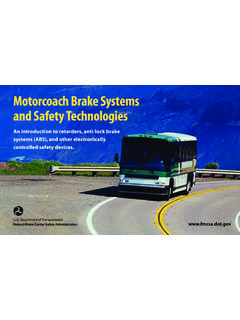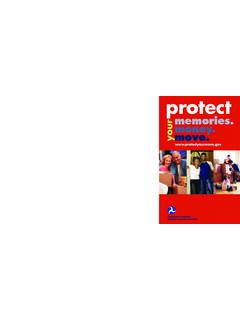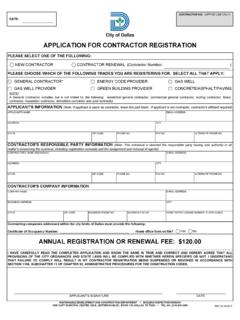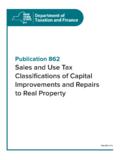Transcription of Best practices for DOT random drug and alcohol testing
1 Department of Transportation Office of the Secretary Office of Drug and alcohol Policy and Compliance Best practices for DOT random Drug and alcohol testing I. Introduction What s the best tool employers have for deterring drug and alcohol use in the workplace? random testing . And, here are just a few of the reasons why: Saves lives and prevents injuries. Helps employers identify workers with substance abuse issues and facilitate their treatment. Allows employees to easily say no to illegal drug use. "No, thanks. They drug test at work. Reduces employer liability. It is a fair way of testing .
2 The purpose of this publication is to help DOT covered employers and service agents in implementing and evaluating their own random testing programs. While DOT regulations serve as a mandatory minimum and do not prevent additional practices that serve the effectiveness of a testing program, don t forget that some DOT covered employers may also have extra requirements from industry specific regulations. What follows are best practices as identified by representatives from the Office of the Secretary s Office of Drug and alcohol Policy and Compliance (ODAPC), Federal Aviation Administration (FAA), Federal Motor Carrier Safety Administration (FMCSA), Federal Railroad Administration (FRA), Federal Transit Administration (FTA), Pipeline and Hazardous Materials Safety Administration (PHMSA), and the United States Coast Guard (USCG).
3 While actually reading the regulations is very important, we hope this guide provides an additional tool for implementing an effective random testing program. II. random testing is required for safety-sensitive employees Each DOT Agency and the USCG has regulations that require certain employers to implement a random testing program. Industry Regulation FAA - Aviation 14 CFR Part 120, Subpart E, section (b) 14 CFR Part 120, Subpart F, section (c) FMCSA Motor Carrier 49 CFR Part FRA - Railroad 49 CFR Part and FTA - Transit 49 CFR Part PHMSA - Pipelines 49 CFR Part USCG - Maritime 49 CFR Title 46 Part Note: FRA requires employers to submit their random plans for approval.
4 III. Establishing random testing Rates The DOT Agency that regulates a specific transportation industry sets the random testing rate. The Administrator of each DOT Agency is authorized to either increase or decrease the random drug and alcohol testing rates. To establish an appropriate rate, Administrators use information reported from the drug and alcohol Management Information System (MIS) form required by 49 CFR Part 40 and other indicators. The rates are always effective starting January 1 of the calendar year. To check for the current rate, visit ODAPC s website at: . The random rates are annual minimum requirements.
5 So if a DOT Agency requires a drug testing rate of 50% and an alcohol testing rate of 10%, then an employer with 100 safety-sensitive employees would have to ensure that 50 or more random drug tests and 10 or more random alcohol tests were conducted during the calendar year. IV. Setting-Up a random Pool of Employees A. Who gets tested? Regardless of job titles like supervisor, volunteer, contractor , owner operators, etc., people are chosen for testing based on their job function (known as a safety-sensitive function) not their occupational title. Only DOT safety-sensitive employees may be part of the DOT random pool or pools.
6 Remember your DOT testing program must always be separate and distinct from your private company or non-DOT testing program. That goes for your random testing pools, too. DOT and non-DOT random testing pools must be completely separate. Best Practice: Just prior to performing a random selection, refresh the pool to include all safety-sensitive employees subject to DOT random testing , and exclude those not subject to DOT random testing . B. Can an employer regulated by different DOT agencies put its employees in the same random pools? Yes. Employers and Consortia/Third Party Administrators (C/TPAs) subject to more than one DOT Agency drug and alcohol testing rule may combine covered DOT safety-sensitive employees into a single random pool.
7 However, companies doing so must test at or above the highest minimum annual random testing rates established by the DOT Agencies under whose jurisdiction the employees fall. So, if you have FMCSA regulated- and FRA regulated-employees in the same pool, and FMCSA has a 50% testing rate and FRA has a 25% rate, you must test the pool at the 50% minimum rate. Note: PHMSA and USCG do not authorize random alcohol testing for employees in the pipeline and maritime industries. So if employees perform only pipeline duties or maritime duties, they cannot be in any DOT-regulated random alcohol testing pool. Of course employers may decide to separate the pools by specific regulated transportation industry such as a separate pool for truck drivers and a separate pool for transit workers.
8 Each pool must be tested at the required DOT Agency rate for that industry. 2C. Does an employee performing duties covered by more than one DOT Agency need to be in multiple pools? An employee performing duties subject to more than one DOT Agency s regulations must be randomly tested at the percentage rate established for the calendar year by the DOT Agency regulating more than 50 percent of the employee s function. So if you have an employee who drives your trucks 75 percent of the time and operates your transit busses 25 percent of the time, that employee needs to be in the FMCSA-regulated pool. Remember: All other testing ( , pre-employment, post-accident, reasonable suspicion) is regulated under the Agency that regulates the function the employee was performing at the time of the event.
9 Wreck the transit bus; you are subject to post-accident testing under FTA regulations even if you are in the municipality s FMCSA random pool. D. How are employees selected for testing ? Everyone in the pool must have an equal chance of being selected and tested in each selection period. Selections can be by employee name, identifying title, or with FRA regulated testing , a group that is clearly delineated in company policy or random plan. Be sure to use a scientifically valid method to select employees for testing , which may include: use of a random -number table, a computer-based random number generator that s traceable to a specific employee (or with FRA, a group).
10 Note: In the railroad industry, it is a common practice to select employees by the train number rather than specific employee. This would mean that any covered employee working on that train on a specific day (whether it was their regularly assigned position or not) would be tested. Only the FRA permits this practice. Warning: Unacceptable random selection practices include selecting numbers from a hat, rolling dice, throwing darts, picking cards, or selecting ping pong balls. E. How often should selections and tests take place? What makes random testing so effective is the element of surprise. While employees know they will be tested, they are never quite sure of when, so random selections and testing should be performed at least quarterly.















